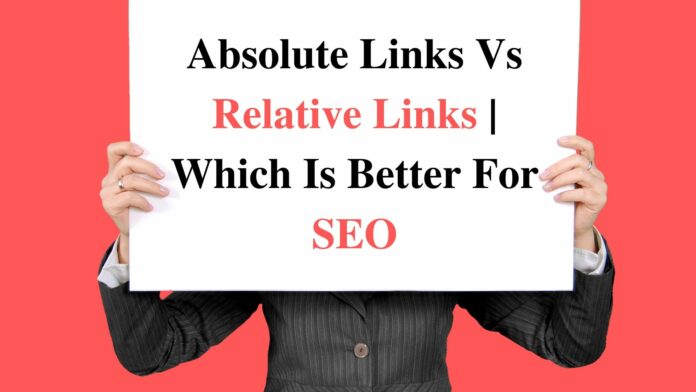This post will explain absolute vs relative URL. The way that you structure your URL & links within your website is definitely vital to the function of your website. This is very important to ensure your website can be successfully crawled and indexed properly.
The construction of your URL is the web location to your website and its subpages. It’s the method Google, Bing, and other search engines crawl and index your domain. No matter what, you do not want an redundant URLs and links that are broken on your site.
What is the Difference Between Absolute and Relative URLs?
In this article, you can know about absolute vs relative URL here are the details below;
You have 2 basic options when it concerns the choice of URLs: absolute URL and relative URL. If you select the wrong type, it will not only make the site difficult for search engines to crawl however might likewise affect your SEO method. Also check best laptop docking station.
1. Semantic URLs<br>
It is also supposed to be as Clean URL’s or rewrite URL’s, easy to use URLs or SEO Friendly URLs Structure and also often referred to as RESTful URLs.<br>
In WordPress, you can select post name as SEO Friendly URLs Structure. You can observe the listed below screenshot.<br><br>
2. Slug<br>
A laggard is the part of a URL that determines the relative URL part of the page in humanly readable keywords. It is said to be an end part of the URL. Which resembles the basename of the URLs building. It is also called as a short label or brief name of the URL or basename of the URL.<be>. Also check free redaction software.
The slug may contain in lowercase letters, uppercase letters, numbers, dash( hyphen-), underscore( _) however lowercase letters and great keywords are best for SEO.<br>
The slug which acts as name format of the URL structure For example, in a site entry URL: https://www.example.com/tutorials/ [” tutorials” is the slug of the URL]
3. Absolute vs Relative URLs Structure<br>
Internal Linking is 1 of the Google SEO elements. whenever you were doing the internal linking procedure on any page/post of the website, the link URLs Structure must be 2 types those are absolute URLs Structure and relative URLs Structure<br>
4. Absolute URLs Structure<br>
Absolute URLs indicate it has a full URL path structure. It requires complete address For an example of an absolute URL would appear like as listed below<br>
- <a href=”http://www.example.com/page-name/”>Anchor Text</a><br>
- <a href=”http://www.example.com/blog/page-name/”>Anchor Text</a><br>
5. Relative URLs Structure.<br>
Relative URLs indicates it has actually shortened URL course structure. It does not use the full address For an example of a Relative URL would look like as below.<br>
- <a href=”http:///page-name/”>Anchor Text</a><br>
- <a href=”http:///blog/page-name/”>Anchor Text</a><br>
6. Which one is best and Why we Choose Relative URLs?<br>
When we are handling big projects a long time we are missing out on any path of the URLs that time online search engine like Google, Bing, Yahoo … think about as broken links. In this manner we select the relative URLs on every page/post of the site.<be>
7. Advantages of Relative URLs<br>
– Helps Search Engines for much better crawling or checking out the URLs.<br>
– It will assist to improve your website’s SEO<br>
– It occupies less area and improves the page Faster filling times.<br>
– Much simpler to Coding for big sites.<br>
– Relative URLs enables same URLs in both staging and production environment. when we remain in staging the domain is different and production is different that’s why relative URLs are much better for both environments and everyone should understand easily.



